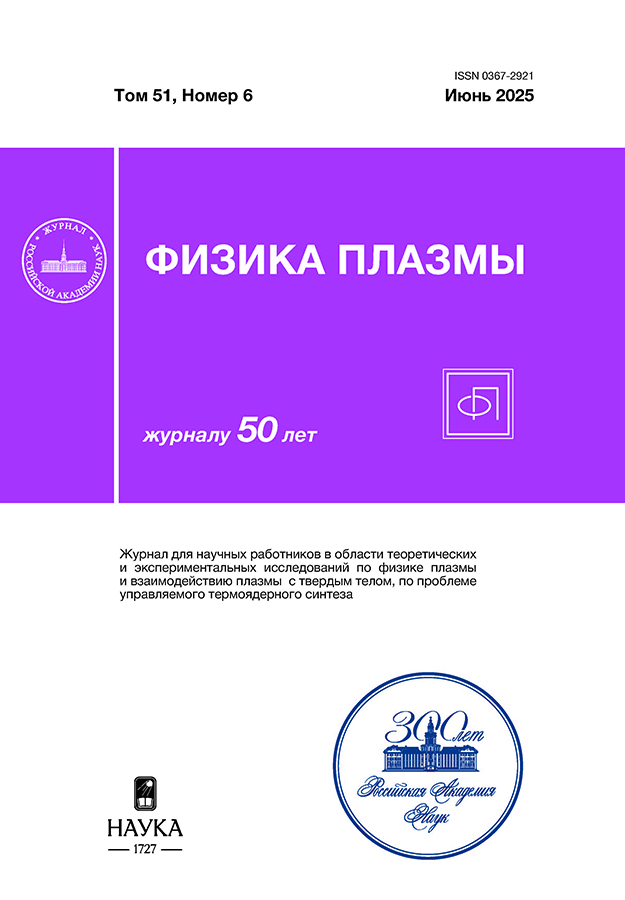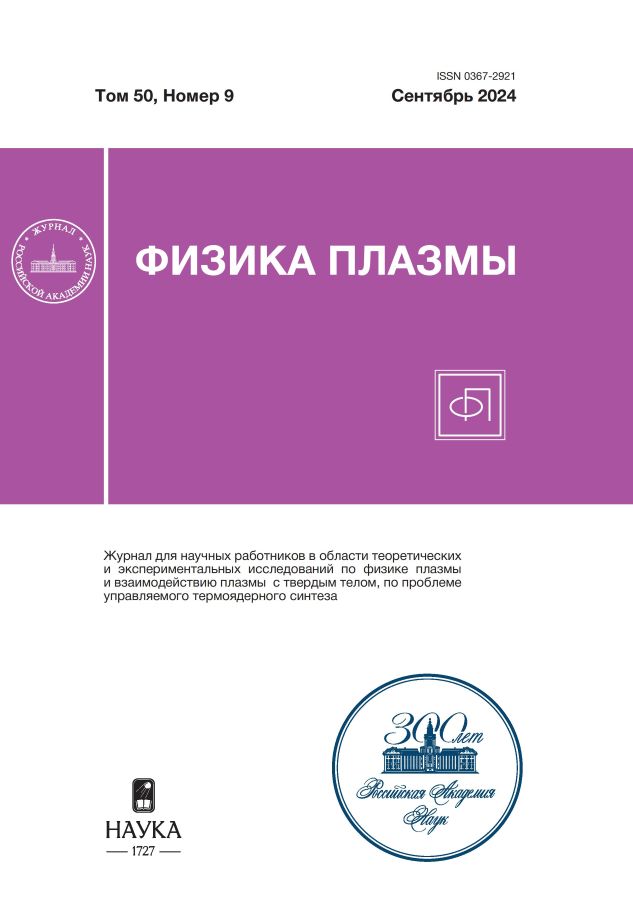Верификация работы апертурного зонда с задерживающим потенциалом для диагностики электроракетных двигателей
- Авторы: Майстренко Д.А.1,2, Шагайда А.А.1, Томилин Д.А.1, Кравченко Д.А.1, Селиванов М.Ю.1
-
Учреждения:
- Государственный научный центр Российской Федерации «Исследовательский центр им. М.В. Келдыша»
- Московский физико-технический институт (национальный исследовательский университет)
- Выпуск: Том 50, № 9 (2024)
- Страницы: 1097-1115
- Раздел: ДИАГНОСТИКА ПЛАЗМЫ
- URL: https://rjsvd.com/0367-2921/article/view/683719
- DOI: https://doi.org/10.31857/S0367292124090066
- EDN: https://elibrary.ru/DVCFKS
- ID: 683719
Цитировать
Полный текст
Аннотация
Рассматривается зондовая диагностика распределения ионов по энергиям и плотности ионного тока в струе плазмы электроракетных двигателей. Приводится подробное сравнение нового зонда с задерживающим потенциалом другой конструкции с традиционным зондом многосеточной конструкции на примере численного моделирования и реальных испытаний при различных параметрах струи холловского двигателя. С помощью моделирования наглядно продемонстрированы недостатки многосеточной конструкции зонда с задерживающим потенциалом и преимущества апертурной. На основании расчетов также подробно исследованы особенности использования нового зонда и сделаны предварительные выводы относительно точности зонда. В заключительной части статьи продемонстрированы результаты совместных испытаний двух зондов при таких параметрах плазмы, при которых трехсеточный зонд работает наиболее точно, с подтвержденной максимальной погрешностью в 5%.
Полный текст
Об авторах
Д. А. Майстренко
Государственный научный центр Российской Федерации «Исследовательский центр им. М.В. Келдыша»; Московский физико-технический институт (национальный исследовательский университет)
Автор, ответственный за переписку.
Email: maystrenko.da@phystech.edu
Россия, Москва; Москва
А. А. Шагайда
Государственный научный центр Российской Федерации «Исследовательский центр им. М.В. Келдыша»
Email: maystrenko.da@phystech.edu
Россия, Москва
Д. А. Томилин
Государственный научный центр Российской Федерации «Исследовательский центр им. М.В. Келдыша»
Email: maystrenko.da@phystech.edu
Россия, Москва
Д. А. Кравченко
Государственный научный центр Российской Федерации «Исследовательский центр им. М.В. Келдыша»
Email: maystrenko.da@phystech.edu
Россия, Москва
М. Ю. Селиванов
Государственный научный центр Российской Федерации «Исследовательский центр им. М.В. Келдыша»
Email: maystrenko.da@phystech.edu
Россия, Москва
Список литературы
- Lev D., Myers R.M., Lemmer K.M., Kolbeck J., Koizumi H., Polzin K. // Acta Astronaut. 2019. V. 159. P. 213.
- Levchenko I., Xu S., Mazouffre S., Lev D., Pedrini D., Goebel D., Garrigues L., Taccogna F., Bazaka K. // Phys. Plasmas. 2020. V. 27. P. 020601.
- Gong S., Li J. // Sci. China Phys., Mechanics Astron. 2014. V. 57. P. 521531.
- Dale E., Jorns B., Gallimore A. // Aerospace. 2020. V. 7. P. 120.
- Gorshkov O.A., Shagayda A.A. // Tech. Phys. Lett. 2008. V. 34. P. 153.
- Trottenberg T., Bansemer F., Böttcher S., Feili D., Henkel H., Hesse M., Kersten H., Krüger T., Laube J., Lazurenko A., Sailer D., Schuster B., Seimetz L., Spethmann A., Weis S., Wimmer-Schweingruber R.F. // EPJ Techniques and Instrumentation. 2021. V. 8. P. 16.
- Hutchinson H. Principles of Plasma Diagnostics. Cambridge: Cambridge Univ. Press, 1987.
- Ya-li M., Fu-jun T., Yu-xiong X., Yi-feng C., Xin G., Yi W., Kai T., Ze-dong Y. // Int. J. Mech., Aerosp., Ind., Mechatron. Manuf. Eng. 2012. V. 6. P. 11.
- Heubel E.V. Enhancing Retarding Potential Analyzer Energy Measurements with Micro-Aligned Electrodes. Massachusetts Institute of Technology, 2021.
- Zhang Z., Tang H., Zhang Z., Wang J., Cao Sh. // Rev. Sci. Instrum. 2016. V. 87. P. 123510.
- Lemmer K.M., Gallimore A.D., Smith T.B., Austin D.R. // IEPC-2007-161, 30th Internat. Electric Propulsion Confer., 2007.
- Harmann H., Koch N., Kornfeld G. // IEPC-2007-119, Internat. Electric Propulsion Confer., 2007
- Hey F.G., Vaupel M., Groll C., Braxmaier C., Tajmar M., Sell A., Eckert K., Weise D., Saks N., Johann U. // IEPC-2017-271, 35th Internat. Electric Propulsion Confer., Atlanta, GA, 2017.
- Maystrenko D., Shagayda A., Kravchenko D., Lovtsov A. // Rev. Sci. Instrum. 2022. V. 93. P. 073504.
- Goebel D.M., Katz I. Fundamentals of Electric Propulsion: Ion and Hall Thrusters. Jet Propulsion Laboratory California Institute of Technology, 2008.
- Shagayda A., Nikitin V., Tomilin D. // Vacuum. 2016. V. 123. P. 140.
- Goebel D. M., Becatti G. // Rev. Sci. Instrum. 2021. V. 92. P. 013511.
- Tomilin D., Lovtsov A. // Electric Propulsion Confer., University of Vienna, Vienna, Austria September 15–20, 2019. IEPC-2019-342.
- Walker M.L.R., Hofer R.R., Gallimore A.D. // J. Propulsion Power. 2016. V. 22. P. 205.
- Azziz Y., Martinez-Sanchez M. Experimental and Theoretical Characterization of a Hall Thruster Plume. Massachusetts Institute of Technology, 2007.
Дополнительные файлы




































